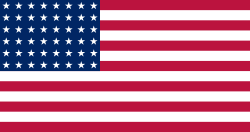Sikorsky R-4
| Sikorsky R-4 | |
|---|---|
Comdr. Frank A. Erickson, USCG, und Dr. Igor Sikorsky am 14. August 1944 in einer R-4 | |
| Typ | Leichter Hubschrauber |
| Entwurfsland | |
| Hersteller | Sikorsky Aircraft Corporation |
| Erstflug | 14. Januar 1942 |
| Produktionszeit | 1942 bis 1944 |
| Stückzahl | 131 |
Der Sikorsky R-4 war ein in den 1940er Jahren entwickelter und eingesetzter Hubschrauber des US-amerikanischen Herstellers Sikorsky Aircraft Corporation. Der R-4 war sowohl das erste in den USA in Serie produzierte als auch das erste von den Streitkräften der Vereinigten Staaten eingesetzte Hubschraubermodell.

Entwicklung und Erprobung
Als Grundlage für die Entwicklung des militärischen Prototyps XR-4 diente der VS-300-Hubschrauber. Der VS-300 wurde ebenfalls von Igor Sikorski konstruiert und 1940 erstmals öffentlich vorgeführt.
Der XR-4 (Herstellerbezeichnung: VS-316A) hatte seinen Erstflug am 13. Januar 1942. Nach den erfolgreichen Flugversuchen bestellte die United States Army Air Forces drei YR-4As und 27 YR-4Bs zur Einsatzerprobung und Flugausbildung. Von den 30 bestellten Fluggeräten wurde je eines an Burma und den Bundesstaat Alaska abgegeben. Weitere Fluggeräte wurden der US-Marine, US-Küstenwache (jeweils als HNS-1 bezeichnet) und der britischen Marine (diese führte den Hubschrauber unter der Bezeichnung Hoverfly I) zugewiesen. Von der Serienversion R-4B wurden 100 Stück hergestellt, davon 20 für die US Navy und 45 für die britische Royal Air Force (RAF).
1943 erhielt der XR-4 einen größeren Hauptrotor sowie einen stärkeren Motor Warner R-550 statt des Warner R-500 und damit die neue Bezeichnung XR-4C.
Vom 6. bis 21. Januar 1944 führte der Stückgutfrachter MV Daghestan beim Geleitzug HX 274 einen Sikorsky R-4 mit. Dieser wurde, noch unbewaffnet, während der Überführung ausführlich getestet.[1] Diese Hoverfly I gehörte zu den ersten sieben nach England überführten US-Hubschraubern (zwei ex YR-4A und fünf ex YR-4B).[2]

Die Bezeichnung R-4 der United States Army Air Forces wurde 1948 durch ein neues Bezeichnungssystem in H-4 geändert.

Produktion
Abnahme der R-4 durch die USAAF:[3]
| Hersteller | 1942 | 1943 | 1944 | SUMME |
|---|---|---|---|---|
| Sikorsky, Stratford | 1 | 14 | 115 | 130 |
Der R-4 in Museen
- National Museum of the United States Air Force (Wright-Patterson AFB in der Nähe von Dayton, Ohio)
- Royal Air Force Museum (Hendon/England)
- Canada Aviation and Space Museum (Ottawa/Kanada)
Militärische Nutzer
Technische Daten
| Kenngröße | Daten R-4C |
|---|---|
| Besatzung | 2 |
| Rotordurchmesser | 11,5 m |
| Länge | 10,2 m |
| Höhe | 3,8 m |
| maximal zulässige Gesamtmasse | 1170 kg |
| Triebwerk | 1 × Warner R-550 mit 149 kW (ca. 200 PS) |
| Höchstgeschwindigkeit | 120 km/h |
| Marschgeschwindigkeit | 105 km/h |
| Schwebegipfelhöhe | 2400 m |
Siehe auch
Literatur
- René Francillon: Hoverfly – The Sikorsky R-4 Story. In: AIR International Dezember 1992, S. 321–328
Weblinks
- Sikorsky R-4-Seite beim National Museum of the United States Air Force
- Heereshubschrauber Sikorsky R-4 auf www.eichhorn.ws
- Fotogalerie Sikorsky R-4B Hoverfly I
Einzelnachweise
- ↑ Jürgen Rohwer, Gerhard Hümmelchen: Chronik des Seekrieges 1939–1945, Januar 1944, abgerufen am 17. November 2012
- ↑ René Francillon, 1992, S. 326
- ↑ Statistical Digest of the USAF 1946, S. 100 ff.
Auf dieser Seite verwendete Medien
US Flag with 48 stars. In use for 47 years from July 4, 1912, to July 3, 1959.
The Canadian Red Ensign used between 1921 and 1957.
This image has compared for accuracy (mainly colors) using an image from World Statesmen. The only change is making the maple leaves green from red. This image has compared for accuracy (mainly colors) using an image from World Statesmen. The most recent version of this image has changed the harp into one with a female figure; see [http://flagspot.net/flags/ca-1921.html FOTW
The Canadian Red Ensign used between 1921 and 1957.
This image has compared for accuracy (mainly colors) using an image from World Statesmen. The only change is making the maple leaves green from red. This image has compared for accuracy (mainly colors) using an image from World Statesmen. The most recent version of this image has changed the harp into one with a female figure; see [http://flagspot.net/flags/ca-1921.html FOTW
Flagge des Vereinigten Königreichs in der Proportion 3:5, ausschließlich an Land verwendet. Auf See beträgt das richtige Verhältnis 1:2.
Flagge des Vereinigten Königreichs in der Proportion 3:5, ausschließlich an Land verwendet. Auf See beträgt das richtige Verhältnis 1:2.
Original Caption: "Comdr. Frank A. Erickson, USCG & Dr. Igor Sikorsky, Sikorsky Helicopter HNS-1 C.G. #39040."
U.S. Coast Guard pilot Stewart R. Graham flies a Sikorsky R-4 Hoverfly (Royal Navy serial FT835) in joint British-American shipboard helicopter trials on board the freighter MV Daghestan in the Atlantic, 1944. The British Admiralty had been impressed by the Sikorsky XR-4 and its anti-submarine potential. These had been confirmed by trials aboard the British freighter MV Daghestan in November 1943. The first British Sikorsky R-4 was accepted in March 1944 in the USA. A second batch was sent to the UK aboard the escort carrier HMS Thane (D48) in December 1944. 240 R-4Bs were originally ordered for the Royal Navy and the Royal Air Force, but only 52 were delivered due to the end of the Second World War.
FT835 was the YR-4B (ex USAAF s/n 42-107246) and it sailed for UK aboard the Daghestan on 6 January 1944. It was fitted with floats and is believed to have flown convoy-protection trials from Daghestan during the trans-Atlantic voyage. FT835 arrived General Aircraft Ltd. Hanworth, London Borough of Hounslow (UK), and issued to the Helicopter Unit early February 1944. it already crashed at Hanworth in May 1944 and it was probably scrapped in 1946.
A Sikorsky R-4B Hoverfly helicopter (s/n 43-46506) at the National Museum of the United States Air Force at Dayton, Ohio (USA).
Autor/Urheber: Cornu1907, Lizenz: CC BY-SA 4.0
Sikorsky R-4 Modell Maßstab 1:11







